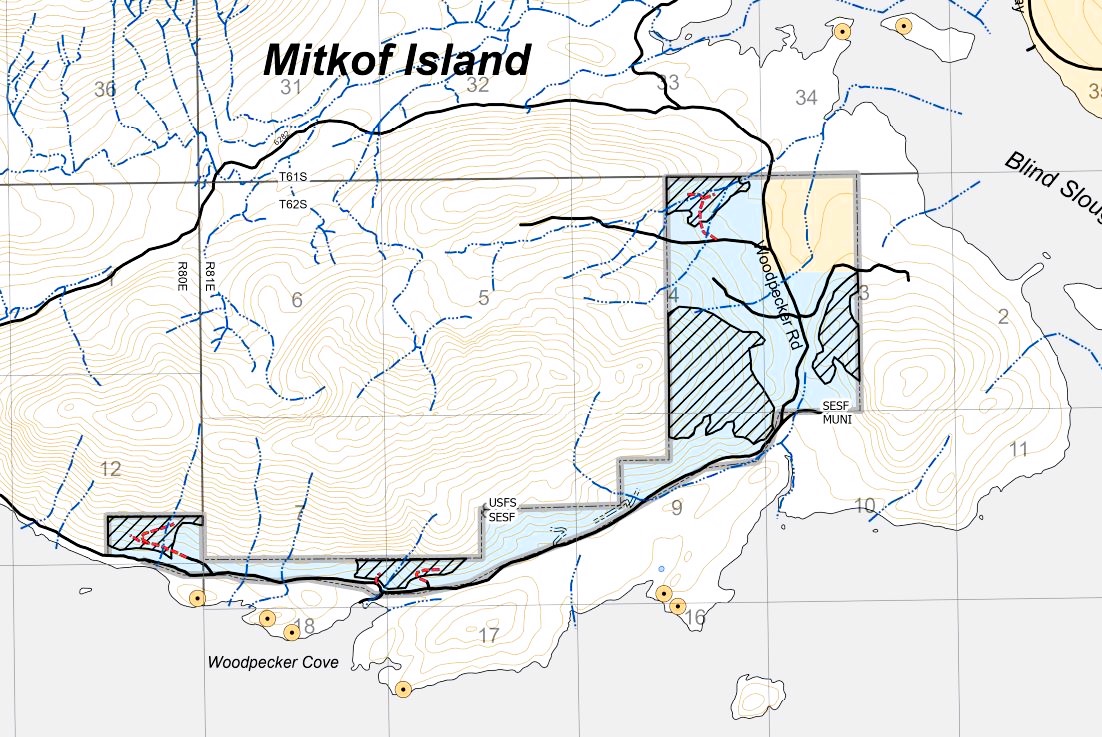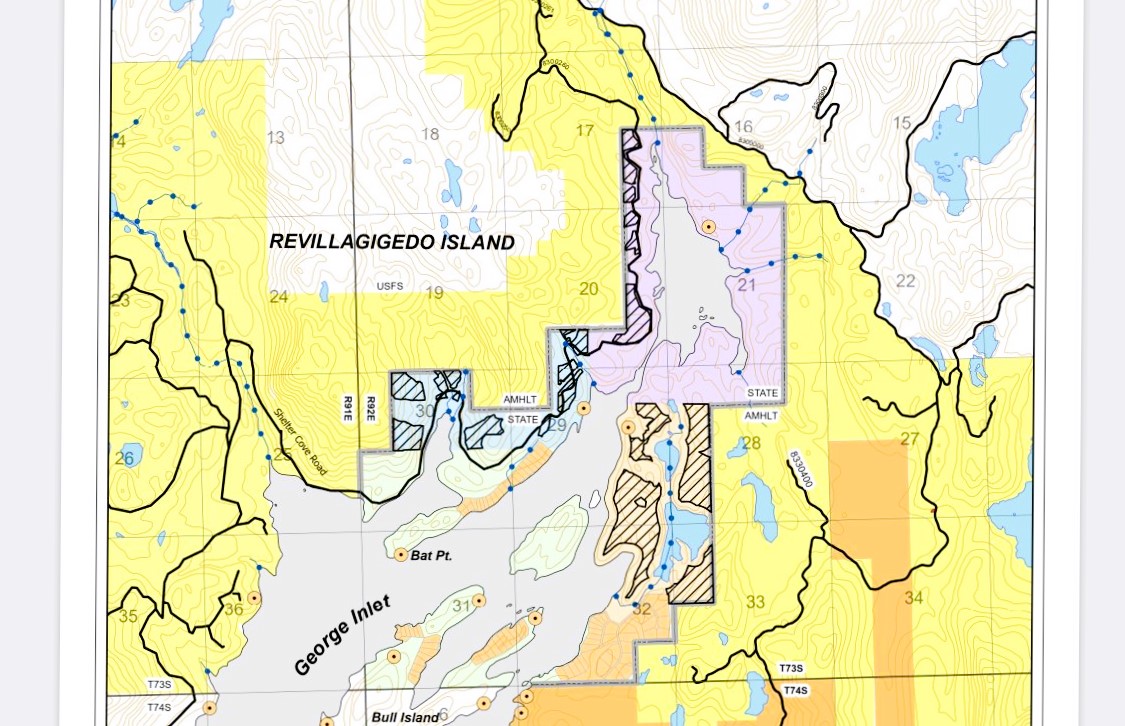
Alaska’s Division of Forestry released its plan for selling timber in Southeast Alaska for 2024-2029. The plan seeks to turn some old-growth stands into areas that can be harvested repeatedly in the decades to come. The State will seek public input. But as CoastAlaska’s Angela Denning reports, an environmental group in the region is frustrated with the public process.
The state has identified about 4,000 acres of timber that they could potentially sell in the southern Southeast region. Most of it is old-growth or stands of trees that have never been logged. The state’s constitution mandates that the state develop its natural resources on public lands.
“We have a tradition of selling timber in this part of the world,” said Greg Staunton, Southeast Area Forester for the state’s Division of Forestry. “There’s an industry that exists. It’s a lot smaller than it has been in the past, but there’s a demand for our timber. And we view it from the perspective that it enables commerce to occur.”
Most of the proposed sales would be clear-cut. The plan states “The Division believes clear-cutting is a proven, and effective silvicultural prescription, providing both adequate natural regeneration of harvested areas and an economically practical harvest method.”
One proposed sale is 345 acres of old growth from Ketchikan’s island, Revillagigedo Island. The location is George Inlet East, about seven miles east of Ketchikan. Other potential sales include over 1,200 acres of mostly old-growth on Petersburg’s Mitkof Island, in three separate areas.
Ideally, the state would like to turn these old growth stands into sustainable young growth that could be harvested every 100 years or so. Staunton says sawmills of different sizes have shown interest in sales in the region.

He says there is a public process in place and they expect to hear feedback on the planned sales from nearby communities.
“People recreate; live proximate to some of these areas we’re working on,” Staunton said. “So understanding their perspective is this part of what we’re doing here.”
But Larry Edwards says the state has a proven record of not listening to the public. He is with the Alaska Rainforest Defenders based in Sitka.
“This state process is so frustrating,” Edwards said. “It’s set up so that the public can really have zero influence on what Division of Forestry does. You know, the local communities will have an opportunity to comment on these but all I gotta say is lots of luck.”
Edwards cites Whale Pass on Prince of Wales Island as an example. The state decided to sell nearly 300 acres of old growth right behind the town, even though most residents opposed it.
He says the state’s timber sales don’t consider enough factors. He says they don’t look at the cumulative impacts of losing the older trees in Southeast Alaska, which take hundreds of years to return to old growth status. Edwards says removing old growth changes the character of the land.
“No one’s looking at how those lands should be managed in the long term,” he said. “And the impacts to terrestrial wildlife or fish aren’t being looked at in a comprehensive way by the State when it’s doing these plans.”
Environmental groups like Edwards also take issue with the state’s plan because over half of the land is not designated for harvesting timber. Some sales are on land that’s classified as “general use”. That designation means the land has the potential for other multiple-use activities like recreation.
“These are lands that haven’t been classified yet for any of those uses,” said Edwards, “and they’re treating them just like any other lands in this in the Southeast State Forest, which I don’t think is legit.”
Staunton says the state does listen to residents and communities about their proposed timber sales. He says preparing for and selling the timber sales is a years-long process. And right now, they’re just starting.
“Our intent is to start looking at these areas in a more focused sense, and that we are interested in information on those sites we’ve identified,” Staunton said.
Edwards says his group will likely comment on the State’s Southeast timber sale plan but adds that he doesn’t think it will make much of a difference.









